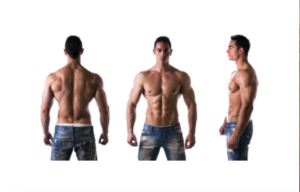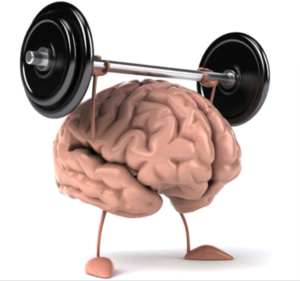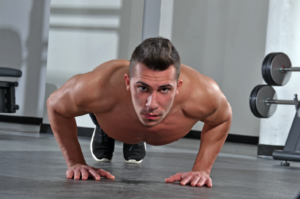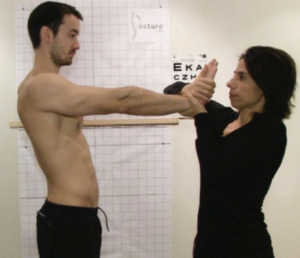By Annette Verpillot
Here’s what you need to know…

- Bad posture increases muscle strain and tension, as muscles that are not aligned are forced to work harder to fight gravity.
- Bad posture increases risk of back pain, nerve impingement and slipped disks, because the spine does not have the right curves and balance. While training, this imbalance of curves could lead to injury.
- Bad posture increases the wear and tear of all joints because they are not moving in the way they are designed to and because the muscles stabilizing the joints do not receive the correct activation from the brain. This breaks down the cartilage and weakens ligaments leading to increased risk of injury such as ligament tears and muscle pulls.
- Bad posture (and the above mentioned factors) can increase the production of stress hormones and inflammation in your body. This can lead to lowered immune system function, decreased sleep quality, digestion and energy levels.
The Brain Muscle Connection

Did you know that you cannot actually control your posture? That’s why you will see a parent slap a slouching kid on their back asking them to “stand up straight”, but this only lasts a few seconds before the child goes back to a slouched position.
Posture is controlled by the subconscious parts of our brain, just like balance, heartbeat and breathing; so we can’t actually “try harder” to have good posture. To change posture, we need to change the way our brain perceives what perfect posture is.
The most popular theories cite that we each have our own proper biomechanics. This is coupled with what movement scientists call “length-tension relationship discrepancies.” This phenomenon refers to the difference in length and tension that can be assessed in an individual’s muscles. Some muscles can be dubbed “long and weak” because they cannot fully and forcefully contract, and others are called “short and strong” because they are always in a state of tension at rest. Like guiding wires that orient the sails of a ship, the tension in those cables is of utmost importance.
Thus, these “length-tension relationships discrepancies” have played a huge part in posture and movement. But how do they shorten or lengthen? How does the body create this situation?
This is where neurology steps in to fill the gap.
More than just a command system that merely sends signals, scientists are now finding more and more ways in which our afferent (sensory) system plays a huge role in our posture, how we move and, down the road, how we create wear and tear in our machinery.
The body’s afferent (sensory) system relies on two types of captors: exteroceptors, captors that assess the information from the outside world and interoceptors, captors that gather the information from inside the body.
Of the exteroceptors, the foot is one of the most important. The skin of the sole of the foot, as well as all the free nerve endings in the richly-innervated plantar fascia, send a lot of data to your brain regarding your weight distribution which in turn allows our bodies to resists against gravity efficiently.
The feet and ankles form the foundation of the body, which means that if there is a structural or functional problem with the feet or ankles, this could increase the risk of injuries to the knees, hips and lower back. As such, any strength and conditioning program for athletes that is intended to prevent injuries should address the health of the feet and ankles.
https://www.youtube.com/watch?v=LXFNZQe-bcs
Posture and Performance

When the body is out of alignment, even if only slightly, all of its joints are misaligned in a compensatory pattern. This phenomenon causes muscles that cross the misaligned joint to contract with less force.
Have you ever had a side that was weaker than the other on a particular movement or exercise, even if that exercise was performed on your dominant side?
If you have answered yes, this is a sign that the joint is misaligned. The mechanoreceptors surrounding the joint are sending inhibitory signals to the brain that, in return prevents the muscles from firing as many motor units in an effort to prevent injury from happening. The brain senses that the joint is not functioning properly and could thus be unstable or unable to handle large loads. The confounding factor here is that this is true only in relation to the other, better-aligned side.
So a very strong individual like a strongman competitor or power lifter can lift incredible loads and yet still be imbalanced and prone to injury, not because of the exercise but because of postural imbalance.
Here’s a fun experiment to do at home for those unconvinced of the need to be symmetrical.
- Stand with someone facing you, barefoot on a flat ground without carpet. Have this person raise their arms parallel to the floor, with the wrists extended and the palms facing you.
- Take one wrist of your partner firmly in hand, while with the other hand tries to bring their hand into flexion. Proceed slowly to avoid yanking on the hand you’re testing and skewing the results. Do this for both hands and have your partner and yourself note the level of strength needed in order to break his resistance.
- Place 5 sheets of paper under your partner’s feet, and then retest the strength of both wrists. You’ll usually notice that the wrist on the side where the foot is elevated is weaker (you can also perform this experiment with a dynamometer test).

In conclusion, a very small discrepancy in the symmetry of the body can thus affect function of a joint and its surrounding muscles. This has an important impact on performance and injury. It can affect anyone and has profound consequences in the long run.
It’s been said that in sports that talent prevails, but it’s also true that any athlete, at any level, needs to have optimal postural alignment to fulfill their athletic potential. Backed by neuroscience, Postural Recalibration is a proven, scientific way to help athletes do just that.
https://www.youtube.com/watch?v=3HHYyFU9ZM8
Book for our upcoming seminar here at the Strength Sensei training facility at:
https://strengthsenseiinc.com/seminar/posture-pro-sports-performance-course
or contact us at 514.315.8489 or [email protected].
Follow Us on: Facebook |Twitter | InstaGram
